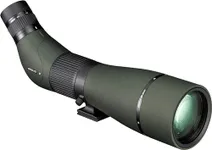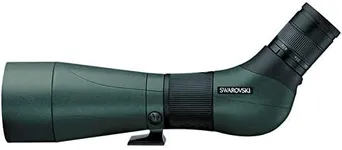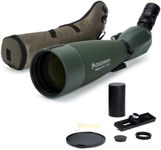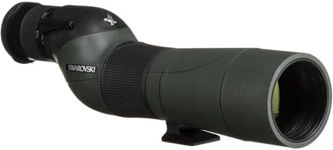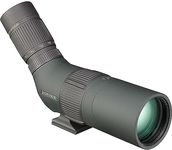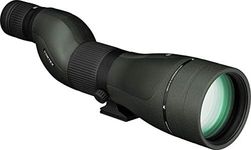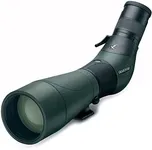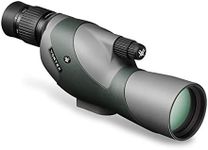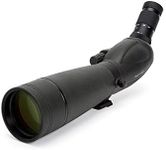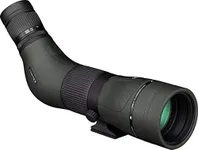Buying Guide for the Best Spotting Scopes
Choosing a spotting scope can be a rewarding process if you know what to look for. Spotting scopes are used for activities like birdwatching, target shooting, nature observation, and even stargazing. The right scope for you depends on how and where you plan to use it. Understanding the key specifications will help you match a scope to your needs, ensuring you get clear, comfortable, and enjoyable views.MagnificationMagnification tells you how much closer an object will appear compared to the naked eye. Spotting scopes usually offer a range, such as 15-45x or 20-60x. Lower magnification (15-30x) gives a wider field of view and is easier to use in shaky or windy conditions, making it great for general nature watching. Higher magnification (40-60x) brings distant details closer but can make the image shakier and dimmer, and is best for stationary use or when you need to see fine details, like at a shooting range. Choose a magnification range that matches your main activity: lower for scanning and wider views, higher for detail at long distances.
Objective Lens DiameterThe objective lens diameter, measured in millimeters, is the size of the front lens. A larger lens (like 80mm) gathers more light, giving you brighter and clearer images, especially in low light. Smaller lenses (50-60mm) make the scope lighter and more portable but may not perform as well at dawn, dusk, or in dense forests. If you plan to carry your scope long distances, a smaller lens is easier to manage. If you want the brightest, clearest image and don’t mind extra weight, go for a larger lens.
Field of ViewField of view is how wide an area you can see through the scope at a certain distance, usually measured in feet at 1,000 yards or meters at 1,000 meters. A wider field of view makes it easier to find and follow moving subjects, like birds in flight. Narrower fields of view are common at higher magnifications and are better for focusing on small, distant details. If you want to track moving wildlife, a wider field of view is helpful. For stationary targets or detail work, a narrower field is fine.
Eye ReliefEye relief is the distance you can hold your eye from the eyepiece and still see the full image. Longer eye relief (15mm or more) is important if you wear glasses, as it allows you to see comfortably without removing them. Shorter eye relief can make viewing uncomfortable, especially for extended periods. If you wear glasses or want a more relaxed viewing experience, look for longer eye relief.
Prism TypeSpotting scopes use prisms to correct the image orientation. The two main types are Porro and Roof prisms. Porro prisms usually offer better image quality and brightness for the price but result in a bulkier scope. Roof prisms make the scope more compact and streamlined but can be more expensive for the same image quality. If portability is key, consider a roof prism. If image quality is your top priority and size isn’t an issue, a Porro prism may be better.
Waterproofing and FogproofingWaterproof and fogproof scopes are sealed and often filled with nitrogen or argon gas to prevent internal fogging. This is important if you plan to use your scope outdoors in varying weather conditions. If you’ll be in damp, rainy, or cold environments, make sure your scope is both waterproof and fogproof to protect your investment and ensure clear views.
Straight vs. Angled EyepieceSpotting scopes come with either straight or angled eyepieces. Straight eyepieces are easier to use for quickly spotting and tracking objects, especially from a standing position or when sharing the scope with others of different heights. Angled eyepieces are more comfortable for extended viewing, especially when looking up at birds or using the scope from a lower position, like sitting or lying down. Choose the style that matches how you plan to use the scope most often.
